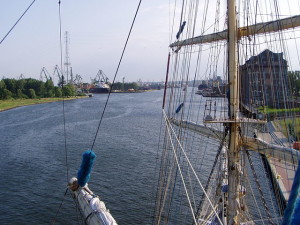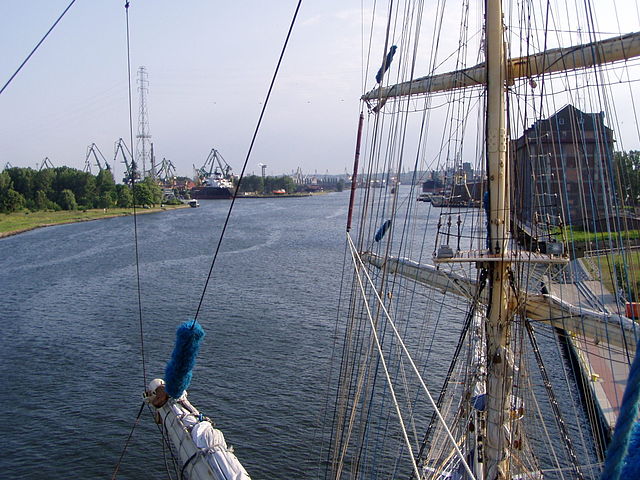 Ocean carriers are adding new calls to Gdansk as the Polish port shows remarkable growth in contrast to other regional ports, fueling optimism for the floundering Asia-Europe trade lane, according to a new report by Drewry Maritime Research.
Ocean carriers are adding new calls to Gdansk as the Polish port shows remarkable growth in contrast to other regional ports, fueling optimism for the floundering Asia-Europe trade lane, according to a new report by Drewry Maritime Research.
The G6 Alliance—APL, Hapag-Lloyd, Hyundai Merchant Marine, MOL, NYK, and OOCL—has announced new calls beginning August 10 at Gdansk on its Asia-Europe Loop 7 service. The service will become the second weekly operation linking Gdansk with Asia after the AE10/Silk operation of 2M partners Maersk Line and MSC.
To accommodate the new Gdansk call, the round voyage of Loop 7 will extend to 84 days from 77 days, requiring an additional ship to be added. The service currently uses 11 ships averaging 13,500 twenty-foot equivalent units (TEUs).
The revised Loop 7 service will be Qingdao, Shanghai (Yangshan), Hong Kong, Yantian, Singapore, Rotterdam, Hamburg, Gdansk, Southampton, Singapore, Yantian, and Qingdao.
Poland’s economic rise
Since joining the EU in 2004 Poland has benefited from billions of euros in subsidies to build new motorways and upgrade its creaking rail network, said the report. Cheap labor has also made Poland a big subcontractor for foreign firms.
The country’s relative economic strength is evident by its container flows, added Drewry. While box traffic from Asia to Europe has stalled recently—volumes were down 3% in the first four months of this year—Poland stands out by registering a fractional increase. Its container imports from Asia have dramatically outpaced the rest of North Europe in recent years with compound annual growth rate between 2009 and 2014 of 12%, more than twice the rate of the rest of the region.
Gdansk has always been positioned as a viable alternative to German and Benelux ports as a gateway not only to Poland, but also Central Europe and other markets such as Russia and Ukraine.
Poland’s box volumes from Asia are still only about one-fifth the size of Germany’s, North Europe’s biggest market for Asian goods, but its rapid ascent has seen its share of the trade rise from about 3.2% in 2009 to 4.4% for the year-to-date in 2015.
Poland’s rising importance in the container market is tied to increased usage of DCT Gdansk, a terminal facility that started operations in mid-2007, initially only for feeder services.
DCT Gdansk’s growth began in early 2010 when Maersk Line added the terminal to its Asia-Europe AE10 loop, deploying ships of around 8,000 TEUs. In May 2011 the AE10 was upgraded to the 15,500-TEU “E-Class” ships, then the worlds’ largest, then turbo-charged with the switch to the 18,000-TEU “Triple E” ships in August 2013.
Exceeding expectations
The growth of DCT Gdansk has significantly exceeded expectations, said Drewry. Against the early target of handling 80,000 TEUs in its first year of operation then rising to 500,000 TEUs after five to six years, it nearly reached the half a million TEU level after just three years with 451,000 TEUs in 2010 and surpassed it with 635,000 TEUs in 2011.
To capitalize on DCT Gdansk’s success, construction started last month on a second terminal that will raise the annual handling capacity to 3 million TEUs at first stage completion around the second half of 2016, potentially rising to as much as 4 million TEUs later.
“Poland will inevitably increase its share of the Asia-Europe container trade and attract more deep-sea services as its economy outpaces other EU nations. New infrastructure improvements such as DCT Gdansk T2 will help the country become a major rival to German and Benelux ports as a transhipment hub for Central Europe and beyond,” said Drewry.
Photo: LukaszKatlewa





